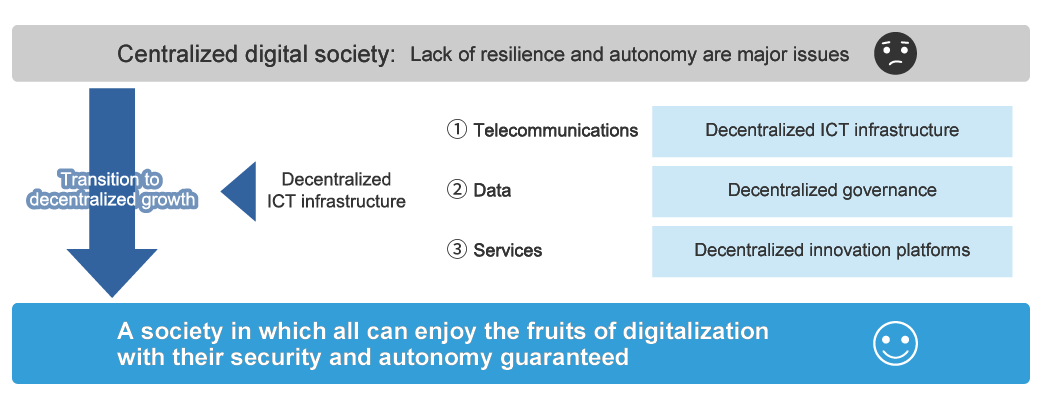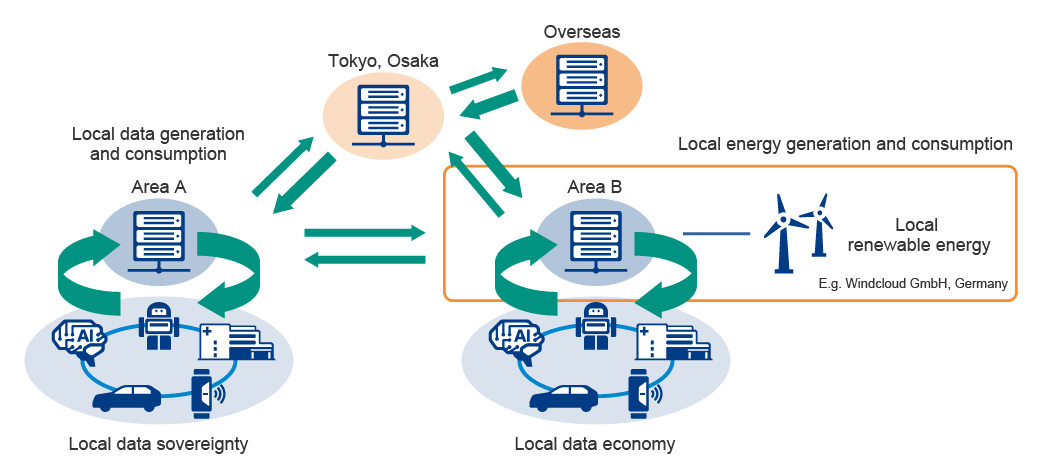And it’s not just communications. Japanese enterprises also have seen their business activities paralyzed by disruptions to the services of GAFAM and other Big Tech platforms based overseas. Thus when we postulate that failures and outages will occur, the resilience of these systems becomes an issue that must be addressed if the maintenance of functions critical to society are going to depend on a limited number of specific vendors.
Looking back on historical precedent, the building of the internet was significant because it provided a way to establish communications between any two points while ensuring resilience: Servers were distributed geographically and redundant transmission routes were maintained between them to ensure a robust network that was highly resistant to disruption even in the midst of crises.
Then during the internet’s subsequent commercialization phase, Big Tech began its ascent as the focus of value shifted to gathering and analyzing data along with the rise of adtech*. Already with a hegemonic position over services and operating systems, Big Tech companies stepped up their involvement in cloud services and other similarly crucial aspects of ICT infrastructure. The digital industry’s concentration in the hands of a few substantial players erased the early internet’s inherent advantages—like its decentralized nature and the spirit of collaboration among its users—resulting in weakening of the net’s overall resilience†.
This overconcentration of not only communications infrastructure‡, which is subject of tight regulation to ensure reliability and security, but also the lightly regulated services layer as well, resulted in progressive weakening of resilience, a critical risk for digital society. And this risk will be even greater when technologies like autonomous cars and transport, remote surgery, and remote monitoring and control of vital infrastructure take hold.
All this points to the urgency of making ICT infrastructure more resilient to ensure our digital society’s viability.
* Technology for delivering ads on the internet
†This problem awareness is behind the emergence of Web3 as well
‡ Principally the Telecommunications Business Act (Act No. 86 of December 25, 1984) and its Telecommunications Business Facilities Regulations


